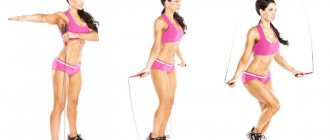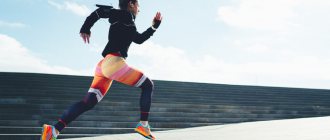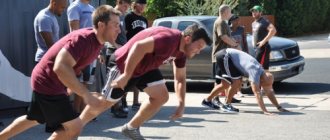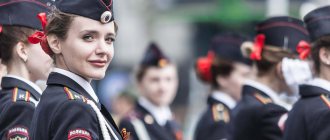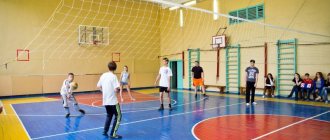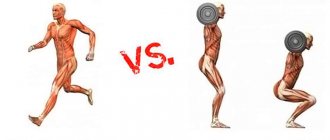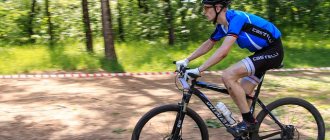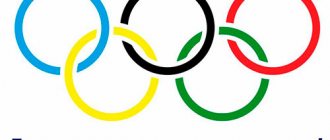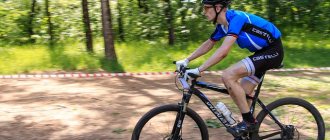How to learn to do pull-ups
So, in order to do many pull-ups on the horizontal bar in one approach, you need, no matter how trivial it may sound, just do a lot of pull-ups. Moreover, it is advisable to do it regularly and adhere to one or another training regimen. It is not without reason that in almost any sport special attention is paid to the training plan. You may ask which training scheme on the horizontal bar can bring results most effectively. In order to answer this question, you should first think about what goal you set for yourself. The main thing is that you yourself believe that the chosen training plan brings you closer to your goal. If you are convinced that you have stopped moving forward, do not be afraid to experiment, feel free to change schemes, invent your own, and return to the old ones again. Once you get into a certain shape, you may encounter a situation where your results, after a long period of growth, deteriorate somewhat. This is normal because it is impossible to be at your peak all the time. The main thing is to take this calmly. The best thing you can do is to continue regular exercises on the bar, but without exposing your body to excessive stress.
However, pay attention to the technique of performing the exercise! Enjoy how beautifully and gracefully you perform your approaches. And don’t be upset if at first it seems to you that by swinging or kicking your legs you can pull yourself up a couple of times more. Of course, practicing on the horizontal bar requires a certain skill. Over time, your pull-up technique will improve significantly if you follow these simple tips:
A set of exercises for warming up.
Warm-up running and walking are performed: at a normal pace, on toes, on heels, on the inside and outside of the foot, with hands resting on the knees, bending down; with a high hip raise in a half-squat, in a squat, with hips, side and variable steps, with a cross step forward, to the side. A combination of walking and jumping is possible. Running can be normal, with a high rise of the hips, with bending the legs back, with raising straight legs forward or backward, with a cross step forward, backward, to the side with turns, stops, throwing and catching objects, with jumping over obstacles, with moving over obstacles .
- General developmental exercises include: exercises for the muscles of the arms and shoulder girdle, raising straight arms forward, up, to the sides, back, simultaneously, alternately, sequentially; exercises for the muscles of the torso and neck - tilting the head and torso forward, backward to the sides. Circular movements of the head and body to the right and left;
- exercises for the leg muscles - bending and extending the legs, lunges, jumping out of the squat position, springy movements in a squat; exercises for the back muscles.
It is recommended to distribute the time allotted for warm-up as follows: warm-up running and walking – 5 minutes. General developmental exercises – 15 min.
Options[edit | edit code]
Elbow bridge[edit | edit code]
Rest your elbows on the floor, keeping them close to your body. Now, while doing push-ups on your elbows, try to lift your body off the floor and hold this pose isometrically for a while. You can also swing up and down if you want. It will be easier for you to perform this exercise if you fully extend your legs at the hip joints. With your legs fully extended, this exercise will be much more difficult to perform.
Elbow pull-ups[edit | edit code]
Rest your elbows on two step platforms of equal height. You can place mats, towels or pillows under your elbows to make the exercise more comfortable. Bend your knees so that your feet are directly under your knees, and fully extend your hips so that your torso is straight. Don't arch your lower back
Throughout the entire exercise, the body forms one straight line from head to knees. Push up on your elbows, squeezing your shoulder blades and sticking your chest out. Having risen as high as possible (you don’t have to raise your shoulders yet), squeeze your shoulder blades and fix this position for 1-2 seconds, then return to the starting position and repeat.
One-arm pull-up with body rotation[edit | edit code]
Perform a standard one-arm pull-up (a), aiming your non-working arm at the ceiling as you rise. As you lower, rotate your upper body (but not your lower back) and reach down with your non-working arm (b). It is important that the humerus of the working arm remains in the socket of the joint. Also make sure that your shoulders and hips move as one, avoiding twisting at the lower back.
Climber pull-up[edit | edit code]
This is the most advanced form of pull-ups because the entire body is supported by one arm. Grasp the bar or handle of the hanging strap with your working hand. With your supporting hand, grab the wrist of your working hand and pull yourself up. To make the exercise more challenging, move your supporting hand to the elbow of your working arm, then to the biceps, and finally to the shoulder.
Horizontal pull-up "Spider"[edit | edit code]
Another way to transfer more of the load to one side of the body when performing pull-ups is through additional leg movements. When performing these pull-ups, you, while rising on a low bar, simultaneously bend one leg and pull it with your knee towards the elbow of your arm of the same name. The exercise can be made more difficult by fully extending the raised leg and, in the upper position, extending it to the side. The need for a counterweight forces more weight to be transferred to the opposite arm. Perform all repetitions by lifting the same leg and then switch sides or change sides after each repetition.
The benefits of pull-ups on the horizontal bar
There are several types of physical activity that are not only not harmful, but also certainly beneficial for the spine. The most accessible are pull-ups and swimming. Strictly speaking, the pull-ups themselves can be replaced with a regular hang on the horizontal bar. You just have to hang for at least two to three minutes twice a day, and you will undoubtedly notice an improvement in your posture.
The spine is stretched in two positions: horizontal and while hanging. It is not for nothing that a person in the morning, after sleep, is slightly taller than at the end of the day. In a similar way, we grow after hanging on the horizontal bar for a long time. Unfortunately, it is impossible to stay in a hanging position on a bar for as long as, for example, in a pool or bed. Nevertheless, it is within your power to do exercises on the horizontal bar regularly. After all, a straight, slender back makes you taller, and beautiful posture makes you fit.
Here is a good and very simple exercise for relieving tension in the spine - hanging on a horizontal bar while simultaneously smoothly rotating around its axis clockwise and counterclockwise. In the future, it makes sense to move on to pull-ups on the horizontal bar. However, you should not force things and do the maximum number of repetitions in the first approach. You need to increase the number of pull-ups gradually.
Start gradually - with a few pull-ups, complemented by hanging for a minute. And then gradually increase their number. Over time, without straining, but while enjoying yourself, you will feel the power of your strengthening muscles. Tell me, do you think the number of ten pull-ups on the horizontal bar is attractive? How about twenty? In fact, thirty pull-ups performed with good technique is not the limit for most healthy people.
Of course, you may assume that in this case I am somewhat embellishing the reality, but this is not so. Below is a workout plan that can effectively achieve a significant increase in the number of pull-ups on the bar. All you need to do is find a horizontal bar nearby.
Introduction
GTO are three letters, the meaning of which is known to any resident of our country. The “Ready for Labor and Defense” complex is the crown of the Soviet system of physical education, its program and regulatory framework. The GTO complex is aimed at shaping the moral and spiritual image of Soviet people, the harmonious and comprehensive development of their physical and moral qualities, strengthening their health and increasing creative and labor activity.
Here is a list of the main tasks that the GTO complex solved: the use of physical culture as the most important component of the Soviet way of life; achieving a high level of physical fitness of Soviet people, ensuring creative longevity, the necessary state of health, highly productive work, and readiness to defend the Motherland; broad and comprehensive promotion of physical culture among various categories of the population; instill in Soviet people the need for regular physical exercise throughout their lives; mastering the basic principles of the Soviet system of physical education, knowledge and practical skills of independent physical exercise, hygiene and civil protection; mass involvement of the population in active participation in the leadership of the amateur physical education movement; promoting the development of various forms of physical exercise in study, work, and recreation; organization of a rational motor regime for all age, sex and socio-demographic groups of the population; development of mass sports, identification and education of sports talents.
Pull-up diagram on the horizontal bar
| Program to increase the number of pull-ups in 30 weeks www.Turnik30.narod.ru | ||||||||||||||||||||||||||||||
| A week | 1 | 2 | 3 | 4 | 5 | 6 | 7 | 8 | 9 | 10 | 11 | 12 | 13 | 14 | 15 | 16 | 17 | 18 | 19 | 20 | 21 | 22 | 23 | 24 | 25 | 26 | 27 | 28 | 29 | 30 |
| Approach 1 | 6 | 7 | 8 | 8 | 9 | 10 | 10 | 11 | 12 | 12 | 13 | 14 | 14 | 15 | 16 | 16 | 17 | 18 | 18 | 19 | 20 | 20 | 21 | 22 | 22 | 23 | 24 | 24 | 25 | 26 |
| Approach 2 | 5 | 6 | 6 | 7 | 7 | 7 | 8 | 8 | 8 | 9 | 9 | 9 | 10 | 10 | 10 | 11 | 11 | 11 | 12 | 12 | 12 | 13 | 13 | 13 | 14 | 14 | 14 | 15 | 15 | 15 |
| Approach 3 | 5 | 5 | 5 | 5 | 6 | 6 | 6 | 7 | 7 | 7 | 8 | 8 | 8 | 9 | 9 | 9 | 10 | 10 | 10 | 11 | 11 | 11 | 12 | 12 | 12 | 13 | 13 | 13 | 14 | 14 |
| Approach 4 | 4 | 4 | 5 | 5 | 5 | 6 | 6 | 6 | 7 | 7 | 7 | 8 | 8 | 8 | 9 | 9 | 9 | 10 | 10 | 10 | 11 | 11 | 11 | 12 | 12 | 12 | 13 | 13 | 13 | 14 |
| Approach 5 | 3 | 4 | 4 | 5 | 5 | 5 | 6 | 6 | 6 | 7 | 7 | 7 | 8 | 8 | 8 | 9 | 9 | 9 | 10 | 10 | 10 | 11 | 11 | 11 | 12 | 12 | 12 | 13 | 13 | 13 |
| Total | 23 | 26 | 28 | 30 | 32 | 34 | 36 | 38 | 40 | 42 | 44 | 46 | 48 | 50 | 52 | 54 | 56 | 58 | 60 | 62 | 64 | 66 | 68 | 70 | 72 | 74 | 76 | 78 | 80 | 82 |
Stick to this training regimen for thirty weeks, and you are guaranteed to be able to do thirty pull-ups, or even more. Exercise on the bar on all days of the week except one. Rest between sets for 2–3 minutes. Your muscles will become extremely resilient and strong.
Little tricks:
- To create the right mood, use music that gives you a surge of energy.
- Have a good rest! Remember that the key to success is regularity. If you feel that you haven’t had time to regain your strength, train today in a soft mode, or even skip the day altogether.
- Never exercise while sick or injured. You may feel that if you miss a couple of days of classes or a whole week, you will fall far behind. Actually this is not true. If you think a little, you will see for yourself that it is much more important to prevent injury, which can set you back many months. And even more so, do not exercise on the horizontal bar to the detriment of your health.
- Pay special attention to the technique of pull-ups on the bar. Always prioritize the quality of reps performed in an exercise over the quantity
History of the GTO complex
It all started like this. Physical education and sports in Tsarist Russia were carried out by athletes. The St. Petersburg worker or Tambov peasant had no time for sports achievements and recreational gymnastics. From the very first days of Soviet power, physical education became one of the most pressing tasks: the young Soviet Republic needed healthy people, the Red Army needed strong, hardy and skillful fighters, physical education and sports were supposed to become powerful tools. moral education of youth. On the day of its fifth anniversary - May 24, 1930 - the youth newspaper "Komsomolskaya Pravda" published a selection of materials united under the general heading "Strong muscles, a keen eye is needed by every worker!" The newspaper rightly noted that, unfortunately, “physical exercises in our circles, on sites and stadiums are not yet sufficiently adapted to the requirements of production, to the requirements of defense.” And, expressing the opinion of the Central Committee of the Komsomol, he proposed introducing standards that could check the readiness of the working people of the Land of Soviets for work and defense. Everyone who meets these standards receives the right to wear an honorary award - a badge with the inscription “Ready for labor and defense.” The appeal of the newspaper and the Komsomol received a wide response from citizens of the USSR. Writer Maxim Gorky and scientist I.P. Pavlov, many people known throughout the world and the country approved the idea of the GTO. The All-Russian Central Council of Trade Unions adopted a special resolution in which it noted that the introduction of GTO standards will improve the work on the militarization of physical culture and increase the attention of our public to the comprehensive physical education of people building the world. the first socialist society. On March 11, 1931, the All-Union Council for Physical Culture under the Central Executive Committee of the USSR approved the “Ready for Labor and Defense of the USSR” complex.
A struggle for the GTO began throughout the country, at the forefront of which were Leningraders, primarily students of the world's oldest physical education university. “Accepting the norm of the GTO badge becomes a matter of honor for every employee,” the newspapers rightly wrote. In the first All-Union review-competition, held shortly after the introduction of the GTO complex, Leningraders “were among the few organizations that held the first review-competition in a combat manner.” By the fourteenth anniversary of the October Revolution in Leningrad, there were 7 thousand people who had fully passed the standard of the GTO complex (the All-Union Council for the GTO Physical Education Complex - VSFK - planned only 3 thousand badges for our city). The winter of 1931/32 became a difficult test for Leningraders who fought for the GTO.
The vagaries of Leningrad weather are well known. There was no good snow that winter until February 1932. And when the snow finally fell, a large-scale event began that had no analogues in the history of Russian physical education and sports: 140 thousand people began skiing and passed the GTO standards1 “Leningrad bristled with skis. Leningrad is now not only a water city, but also a ski city, the press declared. “Now in Leningrad there is hardly a person who does not know three letters - GTO.”
More than 50 managers and 350 students of the Institute of Physical Education. P.F. Lesgafta and the College of Physical Education went to enterprises to organize the passing of standards. The plant's managers, led by the directors, were the first to pass ski standards, setting an example for their subordinates. Those who passed the TRP standards were led by senior officials of party and Komsomol organizations, chairmen and members of the presidiums of regional executive committees, and leading workers. “Given the importance of passing the GTO standards, I undertake to pass all the standards before May 1, I begin to pass the standards on February 21 (from skis), I call all the responsible secretaries of the party cells of the plant and triangles in the stores to follow my example, I personally call the comrades from the 8th pistol -machine gun. Foizibush and Kuzin,” we read the “challenge” of the executive secretary of the workshop party cell, published in No. 2 of the special bulletin of the Spartak magazine. Talks and lectures, leaflets and posters. poetic slogans and radio broadcasts, reports and reports, radio calls from workshops dedicated to the GTO, trams decorated with calls for passing standards filled our city. Organizations that successfully passed the GTO standards were awarded red banners, those lagging behind received the “Order of the Turtle” challenge. Photos of those who passed the GTO standard are posted on the Board of Honor along with photos of production managers. When passing the standards, much attention was paid to newspapers, magazines, and radio broadcasting in Leningrad. The “struggle for the GTO” turned into a struggle for the popularization of the ideas of Soviet physical culture, which found their full form and embodiment in the UGH complex. The game was carried out along with the general political struggle, with the struggle to strengthen all links of the physical education movement, primarily grassroots brigades, cells, groups. “Compliance with standards is becoming the business of not only athletes: mass training, preparation for meeting standards is becoming the business of all workers. The difference between last winter and the previous one is that the masses of non-physicists went to take the standards along with the athletes. Passing the standards is becoming common among older people 50-70 years old, says the brochure “Leningrad in the Battles for the GTO,” published in 1934. — Training sorties, combat sorties, thousands of people on the Neva, stadiums, factory centers and bases, thousands of people who had never skied, got up and left.
Marshal K.E. Voroshilov awarded the GTO badge with the Order of Physical Culture. This badge was made in 1931, after the magazine “Physical Culture and Sports” announced a competition, the winner of which was the fifteen-year-old schoolboy G. Taktarov. The famous artist M. Yaguzhinsky helped the student finalize the sketch, and the badge - a silver circle on a chain with the number I - received full approval.
The struggle for the “physical education order” brought such famous athletes as the Znamensky brothers, Maria Shamanova and many others into big sports. Among the first to pass the GTO standard were the most famous people of the country: miner Alexei Stakhanov, ballerina Galina Ulanova, one of the world's greatest mathematicians, academician Andrei Nikolaevich Kolmogorov, Hero of Socialist Labor Georgy Speransky, Hero of the Soviet Union Marina Chechneva, tractor driver Pasha Angelina.
As the GTO complex became more and more a national affair, adjustments and additions were made to this complex. Already in 1932, the second, more complex stage of the GTO appeared. In 1934, for teenagers aged 13-14 and 15-16 years old, standards were introduced for the “BGTO” badge - “Be ready for work and protection.” Compliance with these standards became the initial stage of comprehensive physical development.
In the alarming pre-war times, on November 26, 1939, the Council of People's Commissars of the USSR adopted the Resolution “On the introduction of a new physical education complex “Ready for Labor and Defense of the USSR”, in which the military - the applied orientation of the complex was strengthened. “The new complex,” the resolution says, “was approved with the aim of further improving the system of physical training of the working people of the USSR.” To pass the standards of the new complex, mandatory and optional standards were introduced. physical education at all levels of our education system: in primary and secondary schools, in technical schools and universities. “And this modification was to be carried out on the basis of the new GTO complex.
“The All-Union physical education complex “Ready for Labor and Defense of the USSR” thus acquired national significance and served as a solid and reliable basis for the entire Soviet system of physical education,” writes the “Encyclopedia of the GTO bib.” Over the years of the existence of the GTO complex, almost all generations of Soviet people have passed through its standards, actively engaged in physical education and sports, thanks to which they acquired good health and physical fitness. With the GTO badge, miners went to the mine face, steelworkers opposed open-hearth furnaces, grain growers went into the fields, and builders went to build new cities.”
Life does not stand still. The living conditions of our people have changed, and the question naturally arose about changing the GTO standards approved in 1939. It was attended by scientists, coaches, physical education teachers, veterans of the first GTO complex, and employees of sports organizations. development and discussion of a new complex. Valuable proposals were made by the USSR Ministry of Education, the Ministry of Secondary and Higher Education, the USSR Ministry of Defense, the USSR Ministry of Health, the DOSAAF Central Committee and many other organizations. On January 17, 1972, a resolution was adopted by the Central Committee of the CPSU and the Council of Ministers of the USSR “On the introduction of the new All-Union physical education complex “Ready for Labor and Defense of the USSR” (GTO),” which began to operate on March 1 of the same year. “The new GTO complex,” says the resolution, which is the programmatic and regulatory framework of the Soviet system of physical education, is called upon to play an important role in the preparation of comprehensively developed and physically perfect people, active builders of their business. communist society, staunch defenders of the Motherland."
Tens of millions of people have passed the standards of the new complex. The complex has significantly expanded the age range, covering both the youngest and the oldest. As Academician of the Russian Academy of Medical Sciences A. Pokrovsky said, the new GTO complex, combined with the principles of rational nutrition, occupational hygiene and rest, is a powerful factor contributing to the preservation of a younger biological age for every person. “It is not true that sports are the prerogative of young people and students,” he wrote. — I dare say that the need for physical education and sports increases with age. Physical education and sports for young people are at the same time a source of strength, health and entertainment. For older people, this is an absolute necessity; it is a source of efficiency, health and prolongation of active activity. However, success can be achieved only when physical education, and in particular the elements of the GTO complex, are included in the general system of the hygienic regime of human life.
